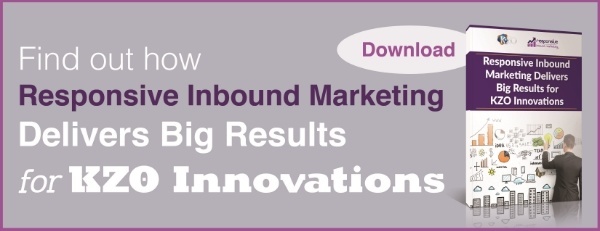When working with an inbound marketing agency, the topic of discussion that surfaces regularly is always: inbound marketing results. People ask, “When will I start seeing results from inbound marketing?” Or, they state, “I want to rank #1 for this keyword. Is that possible?” Or even, “How long will it take to double my monthly leads through the website?”
You may expect to see immediate results from practicing inbound marketing or at least within the first 2 to 3 months. But, keep in mind that inbound marketing takes time to ramp up and execute correctly.
If you look back at the ROI report from HubSpot in 2013, you will find their statistics on results achieved within 7 months of starting inbound marketing. Here are a few highlights:
- 85% of companies using inbound marketing increase their website traffic
- 84% of companies using inbound marketing increase their leads
- 50% of companies using inbound marketing increase sales
Here are the average lead growths of all companies using HubSpot, regardless of industry:
- Increase leads by 2.64 times after 6 months
- Increase leads by 5.99 times after 1 year
- Increase leads by 24.69 times after 2 years.
Other notable statistics from Hubspot’s ROI report include:
- Increased website visitors by 2.40 time per month within a year
- 69% of HubSpot customers saw an increase in sales within a year
These statistics indicate that inbound marketing is a long-term process, and rightfully so; you’re shifting your focus and resources to web marketing activities. However, make no mistake: inbound marketing can help you reach the results you desire. After all, Rome wasn’t built in a day.
The first few months are used to build the foundation of marketing, so let’s take a look at the typical breakdown of what you can expect to see accomplished:
Month 1 will be the initial build-up and start of your inbound marketing campaign. Here’s a short checklist of what to expect:
- Business survey researching your product/service, brand and operations
- Construction of buyer personas or profiles based on customer research
- Benchmarks and SMART goals will be created
- Content audit to assess any existing offers on the web and off
- Construction of an editorial calendar
All of these items must be completed in order to proceed and achieve the inbound marketing results you are after. This essential part of the inbound process if referred to as the Blueprint for your business, which acts as the foundation to your success, providing direction for each and every action in the months to follow and for the duration of your inbound strategy. Inbound success requires proper research, planning, and execution to deliver targeted results. Within one of our Blueprints, you’ll find:
- In-Depth Analysis of Current Marketing & Brand
- Outline of SMART Business Goals
- Complete Competitive Analysis
- Definition of Value Proposition
- Quality Lead Identification and Management
- Lead Scoring and Sales Pipeline Management
- Customer Relationship Management
In month 2, the campaign actually starts gaining traction on the web. Website optimization in terms of content and a clear message will occur, along with on-page SEO. Content creation will ensue in the form of blog posts, top of the funnel eBooks, and other related content offers, based on your business and existing content. Blogging will be an enormous first step in the process if you are not already publishing a blog. However, the goal for your business will be to create a blog targeted to a specific buyer persona and audience in an effort to build a strong community. This is why the editorial calendar is important. It will keep all forms of content in-line with the business goals created in the previous month and create a clear and consistent message across all platforms.
Now it’s time to turn to social media and promotion. Becoming a thought leader in your niche is another integral piece of the inbound marketing puzzle. Answering questions that others are posing on sites including Twitter, Facebook, LinkedIn, or other outlets online is fantastic. Being able to answer questions and point readers back to a helpful and insightful piece of content you have written is even better. Website conversion optimization may also begin to take place at this point, based on website traffic and the needs of the campaign.
The first months of inbound marketing involve a great deal of work and planning. At this stage, you might begin to expect monumental results from your efforts. Unfortunately, as you can see, your inbound campaign is just getting started. But, just because the results aren’t there at this point doesn’t mean they won’t come. Reports suggest that the first stages of notable growth from inbound marketing begin at around the 6 to 9 month mark. If you want to measure the impact of inbound marketing through the first 2 to 3 months, look at 1) the foundation that has been laid out for your campaign, 2) the goals you have set, 3) the content you’ve created and 4) the value that you can provide to current and potential customers both now and in the future with it.
One of the keys to success with inbound marketing is building trust and relationships with both prospects and customers – which isn’t always a quick or easy process. If you aren’t blogging frequently about what your audience cares about and if you aren’t creating more related and relevant offers to follow up on your first campaign, it will be harder to find and maintain those relationships. Losing those relationship happens more often and more quickly than you may think. As your inbound marketing strategy matures, just be sure to track important blog key performance indicators (KPIs) for your blog and landing pages and you will see the results you’re looking for start to grow.
